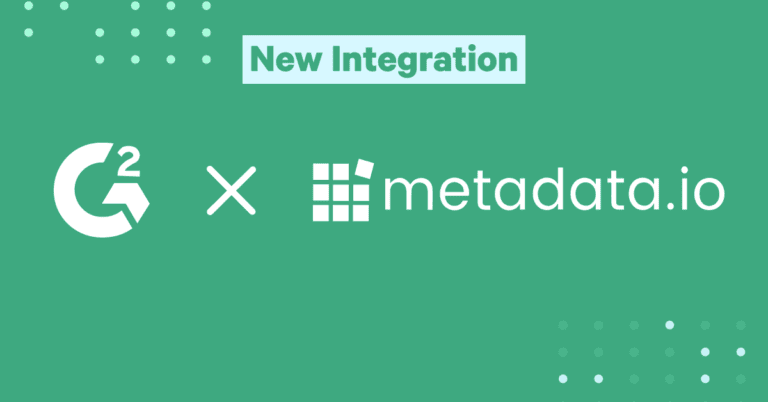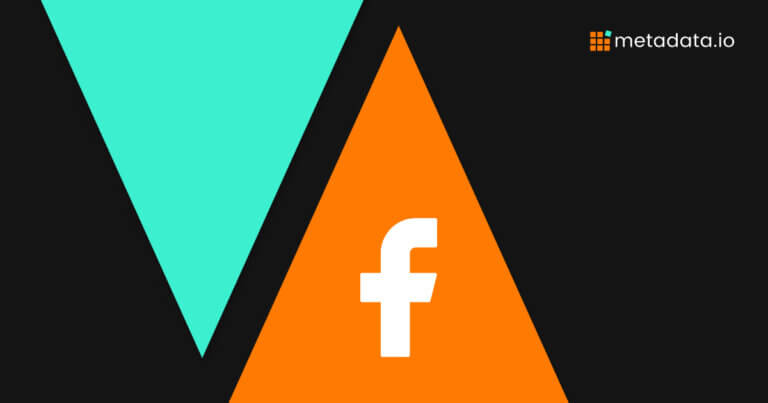Rand Fishkin Says It’s the End of Attribution—Here’s What You Should Do About It
When Rand Fiskin speaks, B2B marketers listen—even when it’s a hard pill to swallow.
In his session from DEMAND, he said, “It’s the end of marketing attribution, friends. I know, Google and Facebook are going to try to convince you that you can still do marketing attribution as long as you pay them money, but I’m pretty skeptical.”
Same, Rand. Same.
Why is attribution on its way out? And, more importantly, what can you do to still tie your campaigns to real business results?
The looming death of audience targeting
The “traditional” approach to audience targeting, primarily with third-party identifiers, have been on death’s doorstep for some time, so Rand’s statement shouldn’t surprise you.
In 2020, Apple fully blocked third-party cookies on Safari, the world’s second most popular web browser. Apple also announced App Tracking Transparency (ATT), which gives the more than 1.4B iPhone users the ability to tell certain apps—think PayPal and Facebook—not to track their activity across the Internet, making personalized advertising nearly impossible.

At the time of the announcement, Apple’s CEO Tim Cook said, “We believe users should have the choice over the data that is being collected about them and how it’s used. Facebook can continue to track users across apps and websites as before, App Tracking Transparency (ATT) in iOS 14 will just require that they ask for your permission first.”
It’s a subtle move toward a privacy-first future, but it still sent shockwaves through the industry, particularly for Meta (Facebook and Instagram’s parent company), which estimated that Apple’s stiffened stance on privacy would cost the company $12.8B in 2022.
Chrome is also phasing out third-party cookies in 2024 (maybe?), which is an even bigger deal since Chrome is far and away the world’s most popular browser. To say marketers are worried would be an understatement.
During an April 2023 survey, the leading concern in media and marketing initiatives for 42% of respondents was this: the declining ability to measure campaign effectiveness on tech platforms and the open web. A lack of preparedness for a cookieless future ranked second.
Unfortunately, the measurement and attribution challenges don’t end there.
Google Analytics (and software like it) is illegal in the European Union (EU), and there’s even a movement by the EU and other countries to make behavioral targeting illegal entirely. Just to clarify: behavioral targeting is basically the backbone of the entire modern advertising ecosystem.
So, yeah, attribution as we know it is toast.
What’s the alternative to third-party cookies?
According to Google, the alternative to third-party cookies is cohort-based advertising, which Rand calls “implied attribution.”
Chetna Bindra, Group Product Manager of User Trust and Privacy at Google, said, “Federated Learning of Cohorts (FLoC) proposes a new way for businesses to reach people with relevant content and ads by clustering large groups of people with similar interests.” She continued, “This approach effectively hides individuals ‘in the crowd’ and uses on-device processing to keep a person’s web history private on the browser.”
While she said that Google’s ad teams have tested the alternative, we’re not holding our breath. Though early results indicate that when it comes to generating interest-based audiences, “FLoC can provide an effective replacement signal for third-party cookies,” we’re just not convinced and don’t think Rand is, either.
Will FLoCs immediately replace third-party cookies? Time will tell, but that’s where we’re headed… at least for now. Either way, according to Rand, the move to cohort-based advertising will mean a lot less personalized, directly trackable attribution in the ad market.
Social media platforms are adjusting to the shifting sands, too
Rand said, “Every single one of these platforms has adopted a new motto over the last five years: Don’t let people leave.”
TikTok, for example, has started to hide the link in users’ bios so other users can’t click it and potentially leave the app. At the same time, X (formerly Twitter) open-sourced its algorithm and revealed there’s a penalty for including a link in your tweet. Said another way, X will show your tweet (is a tweet still called a tweet?) to fewer people if you include a link. Facebook, LinkedIn, and Reddit are all in the same boat—and Rand has proof. His post without a link received 765% more impressions than the one with a link.

With platforms prioritizing native content, dark social (a term used to describe hard-to-track traffic from social media platforms) is becoming common parlance among marketers. Rand said, “Someone will see your content, but they won’t go to your website—you won’t be able to track that LinkedIn, Instagram, TikTok, Reddit, or Facebook was the root of your traffic.” He continued, “And then sometime in the future, they’ll go to your website—maybe via Google search or a branded term you’re bidding on that’ll make paid search [and other paid ad options] look even better.”
And even if you do get a click from these networks and platforms, you’ll never know it because they hide the referral string, making that traffic look like it’s coming from them directly.

So, what’s Rand’s advice? “Smart marketers inside smart organizations are going to move toward measurement over attribution. Everyone else is just going to pay a tax to the major ad providers for the privilege of this implied attribution that the ad providers will continue to offer.”
What’s the difference between measurement and attribution?
Attribution looks something like this:
- Someone sees one of your ads on Facebook, LinkedIn, etc.
- They click on the ad, visit your website or landing page, reach a call to action (CTA), and submit the required info for your offer.
- You head to your analytics solution, like Google Analytics, and see how many people clicked and converted from the ad.
Meanwhile, measurement looks at broad stats, like clicks, impressions, and video views, and compares them to other ads to show you lift. Yes, we’re talking about vanity metrics, but this is the future.

Rand said, “We’ve been referring to these [metrics] pejoratively as vanity metrics, and we have to stop because these are the metrics that allow us to measure lift.”
It’s not as outlandish as it sounds. How did Coke know where to put billboards during the Golden Age of advertising in the 1960s? More importantly, how did their ad team know if the billboards were working or if they should buy more?
They looked at a few things:
- Audience: Demographics, size, composition of the desired location
- Potential Reach: The amount of people they expected to pass that location
- Context & Relevance: The actual area—is this an area Coke wants to be associated with?
- Market Comparables: Did similar billboards drive comparable results?
Advertisers also looked at lift-based measurement. Rand explained: “They looked at same-store sales month over month and said, ‘Hey, the month after we put up the billboard, we saw a 7% lift in same-store sales within a 20-mile radius of Michigan Avenue. That’s how much revenue we can expect, so let’s run that same billboard in these 12 cities and measure it against these 12 cities where we don’t run billboards. And if we see the same lift, we’re going to roll it out nationwide.”
We get it—that’s a hard story to tell. “Hey, can I run an ad on a podcast because our prospects are listening?” won’t typically get your boss to open their wallet. But for better or worse, that’s the world we live in because, as Rand says, “We can’t see the measurement forest through the trees.”
Rand simplifies measurement even more
It’s clear that it’s time for marketers to move away from traditional, often complex attribution models in favor of simplified lift-based measurement. And Rand simplifies things even more when he says he ignores most measurement at SparkToro.
“I believe that properly testing and measuring is so inefficient. It can be such a waste of time and energy, especially for a small company like ours.”
Instead, he works with his team to make smart marketing investments based on intuition. Hot take, right? “We have our sources of influence that we know reach our audience because we do research,” he said.
You should do the same. Find your audience, get their attention, and bring them back to your website. Rand suggests using the Influence Marketing Flywheel to do that.
It’s simple:
- Find a source that reaches your audience, like YouTube, a webinar, or newsletters
- Get their attention with unique content
- Wow your audience
- Bring them to your website
- Turn their audience into your audience

Practically, what are good measurement options moving forward?
If the old way of measurement and attribution is out, what are your options moving forward? Rand presents three options but says only one of them makes sense:
- Keep throwing money at big tech for the “privilege” of the “implied” attribution, aka what you’ve been doing for years. That’s a hard no for us because the channels and platforms will take credit for conversions that would likely have happened anyway.
- Build that hard-to-measure dashboard, which Rand admitted he’s done in the past. The dashboard may work, but at best, it only gets you close to an answer and requires a ton of manual work to maintain. We’ll pass.
- You can measure the big stuff, like traffic, conversion, and revenue—and ignore everything else.
Rand suggests the third option and we agree. According to Rand, The SparkToro team is willing to invest in creative, hard-to-measure channels and tactics. “If our customers are there, that’s what we care about,” he said.
“When you think about me speaking today at DEMAND, I hope some marketers might come to SparkToro tomorrow and check us out. Can I attribute this talk to people signing up for a SparkToro account? Heck no, but I can measure lift. I can say, ‘Hey, I did three events last month, and we saw a 12% lift.’ Do I know exactly which event contributed to that lift? No. But you know what? I don’t care.”
Measure the big stuff with Metadata
With Metadata, you can measure and report on the metrics that really matter. For example, you can connect Metadata with your CRM or marketing automation platform to see which ads, audiences, messaging, and channels are driving real business results. You can also see account-level reports on engagement, qualified leads, opportunities, and revenue.
And the best part? You can see performance across channels without having to log into each native ad channel individually.
With Metadata, you could actually have a single source of truth to tell you how your campaigns are impacting your business’s bottom line, where you should double down for extra impact, and where you should pull back to save some cash.

Want to learn more about how Metadata can help you measure the stuff that matters? Schedule an intro today.


